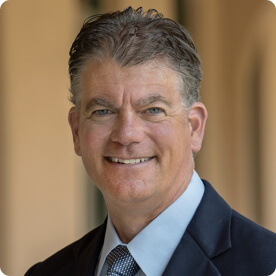It’s August, and many of you have reported that you are already getting questions from clients about how to get organized this fall.
We’re offering a few suggestions for how you might support your clients as they dust off those charitable giving plans
- Structuring a philanthropy plan is especially important for families who want to involve their children and grandchildren in a meaningful way. Many wealth and tax advisors notice that while the matriarchs and patriarchs might have a vision and a plan for their family’s multi-generational approach to philanthropy, that vision and plan are probably unclear to younger family members. A family donor-advised fund at San Diego Foundation (SDF) can provide that much-needed structure and organization to help a family advance its philanthropic purposes for many years.
- It is always surprising to hear that so many people do not have a will or estate plan. Attorneys, financial advisors and accountants do their best to recommend that their clients set up wills, trusts, beneficiary designations, and other estate-planning vehicles. Still, some clients are too uncomfortable to deal with their mortality directly. Approaching an estate plan through the gentler lens of charitable giving can help break the ice and motivate clients to act.
As always, thank you for the opportunity to work with you. We are honored to help you serve your charitable clients and appreciate the opportunity to do so.
Structure: Critical Step in Multi-Generational Philanthropy
Instilling the idea of charitable giving in children and grandchildren at first blush may appear to be easy, but where to begin, and how to make it ongoing? Wealth advisors are increasingly being asked by their clients to weigh in on strategies for fostering a family’s financial values, which frequently include charitable giving traditions.
An essential first step in creating any multi-generational philanthropy plan is to advise clients to consider organizing their charitable giving, such as through a family donor-advised fund at SDF.
Organizing charitable giving itself creates much-needed clarity around the family’s philanthropic purpose. This is because without an organized approach to family giving, it is easy for children and grandchildren to get confused about their parents’ and grandparents’ decision-making processes for which nonprofits to support.
Establishing a fund at SDF can be a very effective solution for many of your clients launching a multi-generational giving strategy. Here’s why:
- Community foundation vehicles are extremely flexible and can engage an extended family in charitable giving. Donor-advised funds, for example, are popular because they allow your client to name children and grandchildren as successor advisors.
- When your client organizes charitable giving through a community foundation fund, the client can make a significant transfer of cash or marketable securities that is immediately eligible for a charitable deduction. Your client can then recommend gifts to favorite charities from the fund when the time is right. This is especially useful for clients who sell a business or, for another reason, experience a large influx of taxable income in a single tax year.
- Establishing a donor-advised fund at SDF can be a much better choice for your family-oriented clients than a DAF offered through a brokerage firm (such as Fidelity or Schwab). That’s because, at SDF, your clients and their children and grandchildren are part of a community of giving and have opportunities to collaborate with other donors who share similar interests.
- SDF can work with a client and the client’s family on a charitable giving plan that extends for multiple future generations. That is because our experienced giving team supports strategic grantmaking, family philanthropy, and opportunities to gain deep knowledge about local issues and nonprofits making a difference.
- Finally, our tools and resources make it much easier for families to communicate across generations about the family’s charitable giving purpose and goals for long-term impact.
We welcome the opportunity to work with you and any of your philanthropic clients to establish an enduring and rewarding family philanthropy program customized to meet each client’s unique purpose.
Legacy Giving: A Conversation Full of Opportunity
August is National Make-A-Will Month. This means your clients may be reading articles and hearing about estate planning more this month than usual, which makes the next few weeks a perfect time to prompt your clients to review their estate plans–or get their wills and trusts in order if they haven’t done so yet.
Charitable giving is an important part of any estate planning conversation. Certainly, bold, legacy-making plans are frequently in the news because of the high-profile people who establish them. Your clients may not realize that they and nearly anyone can leave a legacy to support favorite charitable causes.
By discussing what legacy charitable gifts are, how they work, what the client has in mind, and then formalizing the client’s plan with the proper legal and financial documentation, you can help your clients tie up a few of “life’s loose ends” far in advance of when that legacy gift is made — and give your client the peace of mind of knowing it will get done.
Clients’ charitable giving intentions and the possibility of establishing legacy gifts should be a routine and standard topic of any financial or estate planning discussion, alongside provisions in an estate plan for family and loved ones.
Here’s a primer to help you simplify key principles as you convey to your clients what they need to know about leaving a legacy:
Q: What is a legacy gift to a charity?
A: Encourage your clients to think of leaving a charitable legacy as a post-life gift that the client structures in advance. Legacy gifts are often referred to as planned gifts.
Q: What assets can be used to make a legacy gift?
A: Like the charity gifts that your clients are already making during their lifetimes, cash, stock (especially highly-appreciated stock), real estate, life insurance, and an IRA beneficiary designation (which is hugely tax effective) are examples of assets that can be the subject of a legacy gift. A legacy gift can be expressed in a client’s estate planning documents as a dollar amount, a percentage of the whole, or a legacy gift of the assets themselves. Your client will want to choose assets carefully, enlisting your expertise.
Q: How is a legacy gift actually made?
A: Legacy gifts are typically spelled out in a client’s will or trust documents. This is especially important because after the client is gone, too much is otherwise potentially subject to hearsay or conflict. To attorneys, accountants and financial advisors, this is common sense. But do not overestimate your clients’ understanding of estate plans and how they work. A surprising 2 out of 3 Americans have no estate planning documents!
Q: How can a discussion about legacy gifts help motivate clients?
Estate planning can be an uncomfortable topic because, by definition, it requires a client to contemplate mortality. This is likely part of the reason that 40% of Americans say they won’t even consider putting a will in place unless or until their life is in danger. Most clients think charitable giving is a much more pleasant topic than discussing the end of their own lives. That’s why legacy giving is a topic that can help break the ice and pave the way for the broader, essential conversation about overall estate planning.
Q: What are some particulars to be aware of?
A: Most legacy gifts can be revoked or altered through beneficiary or will changes while the client is alive. This is an important feature to mention to clients who want to include charitable giving in their estate plans but like the idea of flexibility as the overall family and financial picture changes over the years.
Q: What tools does San Diego Foundation offer to help?
A: A beneficial technique is for a client to establish a fund at SDF that spells out the client’s wishes for charitable distributions upon death to specific organizations. The client’s estate planning documents can, in turn, name the fund as the beneficiary of charitable bequests. The client can adjust the terms of the fund anytime during the client’s lifetime to reflect evolving charitable priorities.
We look forward to working with you and your charitable clients as they firm up their legacy giving plans, whether in August or any time of year!
DAFs Have Gone Mainstream
Donor-advised funds have gone mainstream! You may notice that the term “donor-advised fund” or “DAF” pops up more and more in your newsfeed. That’s no accident!
Even niche markets (such as physicians) are getting on board. Just remember that a DAF established through SDF delivers all of the benefits to your client that a commercial donor-advised fund through Schwab or Fidelity delivers – plus much more.
SDF is the hub for all things philanthropy and the best place for your clients to organize their giving, support favorite causes and join with others to make a meaningful difference in the community they love – San Diego.
Learn More
For nearly 50 years, we have partnered with a large network of wealth advisors, estate planning attorneys, tax planners and other advisors to help high-net-worth clients and families achieve financial planning objectives and charitable giving goals while maximizing tax deductions.
If you’re interested in learning how we can help meet your clients’ financial planning and charitable giving goals in 2023, contact me at (858) 245-1508 or jrogers@sdfoundation.org.





